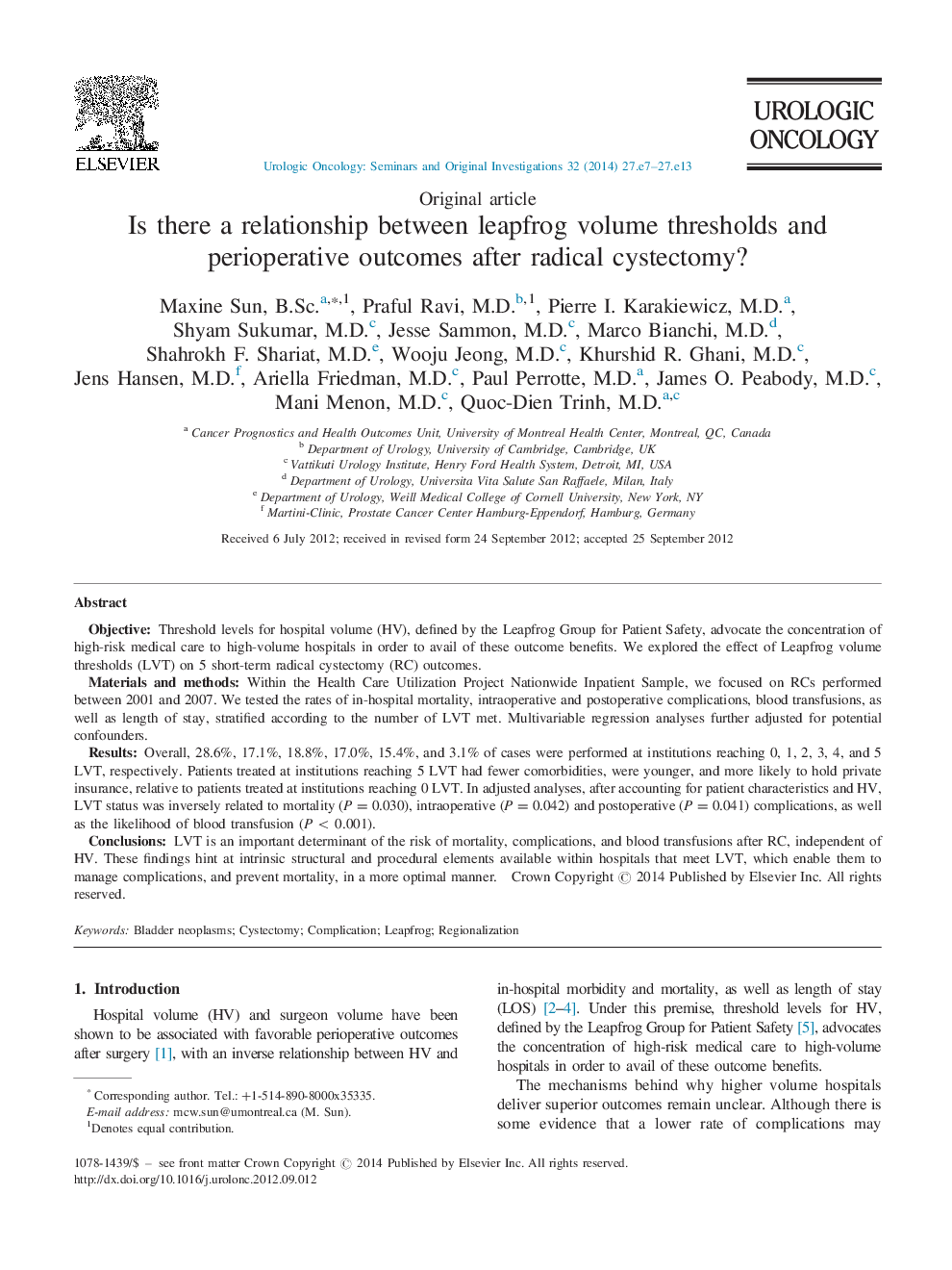| Article ID | Journal | Published Year | Pages | File Type |
|---|---|---|---|---|
| 6194383 | Urologic Oncology: Seminars and Original Investigations | 2014 | 7 Pages |
ObjectiveThreshold levels for hospital volume (HV), defined by the Leapfrog Group for Patient Safety, advocate the concentration of high-risk medical care to high-volume hospitals in order to avail of these outcome benefits. We explored the effect of Leapfrog volume thresholds (LVT) on 5 short-term radical cystectomy (RC) outcomes.Materials and methodsWithin the Health Care Utilization Project Nationwide Inpatient Sample, we focused on RCs performed between 2001 and 2007. We tested the rates of in-hospital mortality, intraoperative and postoperative complications, blood transfusions, as well as length of stay, stratified according to the number of LVT met. Multivariable regression analyses further adjusted for potential confounders.ResultsOverall, 28.6%, 17.1%, 18.8%, 17.0%, 15.4%, and 3.1% of cases were performed at institutions reaching 0, 1, 2, 3, 4, and 5 LVT, respectively. Patients treated at institutions reaching 5 LVT had fewer comorbidities, were younger, and more likely to hold private insurance, relative to patients treated at institutions reaching 0 LVT. In adjusted analyses, after accounting for patient characteristics and HV, LVT status was inversely related to mortality (P = 0.030), intraoperative (P = 0.042) and postoperative (P = 0.041) complications, as well as the likelihood of blood transfusion (P<0.001).ConclusionsLVT is an important determinant of the risk of mortality, complications, and blood transfusions after RC, independent of HV. These findings hint at intrinsic structural and procedural elements available within hospitals that meet LVT, which enable them to manage complications, and prevent mortality, in a more optimal manner.
